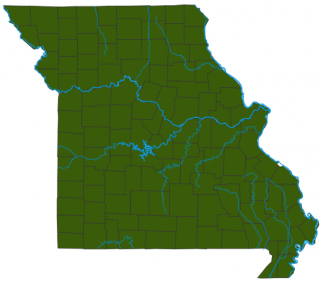Media

Scientific Name
Verbascum blattaria
Family
Scrophulariceae (figworts)
Description
Biennial with either single stems or much branched, spreading stiffly at the same angle, like a partially opened umbrella. Stalks are hairless in the lower parts, becoming glandular-hairy toward the top. Flowers in loose, terminal spikes, only a few opening at one time, white or lemon yellow, with 5 lobes and 5 red stamens. The stamens are surrounded at their base with violet, cobwebby hairs. Blooms May–September. Leaves variable, alternate, in spirals around the stem, sessile, usually oblanceolate, with or without teeth. During the first year, the plant develops a basal rosette of leaves; the flower stalk forms in the second year.
Size
Height: to 3 feet (sometimes taller).
Where To Find

Most common south of Missouri River; scattered north of it.
Habitat and Conservation
Occurs in fields, pastures, waste places, rights-of-way, and gravel bars along streams and rivers. This plant was introduced to North America from Eurasia and has spread across the continent. In some parts of our country, it has been declared an invasive, noxious weed. Like many "successful" nonnative introductions, it thrives best in disturbed areas. It does not commonly invade healthy natural habitats, where native plants are well established.
Human Connections
Humans have complex interactions with plants. In the case of moth mullein, we carried it from one continent to another, whether intentionally or by accident. We don't like it when such plants are weedy and interfere with our efforts to grow crops, but we still enjoy the beauty of the flowers.
Ecosystem Connections
The flower, with its spreading petals, fuzziness, and antennae-like stamens, suggests a moth, thus the common name. Some have said the name comes from the flowers' attractiveness to moths, but apparently the most common visitors are various types of bees and bee-like syrphid flies.
Title
Media Gallery
Image

Right to Use
Image
Credit
Submitted by Cecily Myer
Right to Use
Image

Image
Title
Similar Species
About Wildflowers, Grasses and Other Nonwoody Plants in Missouri
A very simple way of thinking about the green world is to divide the vascular plants into two groups: woody and nonwoody (or herbaceous). But this is an artificial division; many plant families include some species that are woody and some that are not. The diversity of nonwoody vascular plants is staggering! Think of all the ferns, grasses, sedges, lilies, peas, sunflowers, nightshades, milkweeds, mustards, mints, and mallows — weeds and wildflowers — and many more!






















